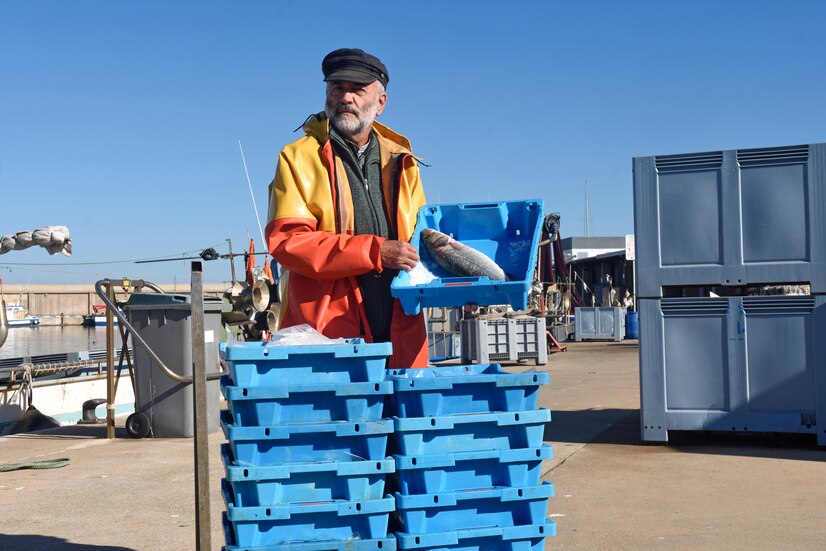Seafood is a highly sought-after food source worldwide, yet it is also one of the most perishable. Ensuring seafood quality and safety is essential for consumer health and vital for maintaining compliance with international food safety standards. In this article, we’ll explore the critical aspects of seafood quality assurance, key components of effective control systems and how both impact the global seafood trade.
Seafood Quality Assurance and Control
The journey from ocean to plate is complex, and without proper controls, seafood can become unsafe to consume. This is where seafood quality assurance steps in, ensuring products meet stringent health and safety standards.
- Why Seafood Quality Assurance is Critical: Seafood quality assurance is pivotal to protecting public health. Poor handling, contamination, or inadequate storage can lead to the growth of harmful bacteria, such as Vibrio or Listeria, which pose serious health risks. Quality assurance mitigates these risks by monitoring every stage of production, from harvesting to retail.
- The Role of Seafood Safety in Consumer Health: Consuming unsafe seafood can result in foodborne illnesses, causing symptoms ranging from mild discomfort to severe health complications and even death. Robust quality control measures safeguard consumer health by ensuring seafood is free from contaminants, toxins and spoilage.
- Understanding the Quality Control of Fish and Fishery Products: Quality control in the seafood industry involves evaluating physical, chemical and microbiological parameters. This includes monitoring freshness indicators like texture, smell and appearance, as well as conducting laboratory tests to detect contaminants or ensure compliance with nutritional labelling requirements.
Key Components of Seafood Quality Control
Seafood quality control relies on a combination of inspections, adherence to standards and regulatory compliance. Inspection and testing procedures are essential components of seafood quality control, ensuring that only safe and high-quality products reach consumers. Each type of testing focuses on specific aspects of safety and quality assurance:
Sensory Analysis: Assessing Texture, Odour, and Visual Appearance: Sensory analysis is often the first line of quality control in seafood production. This involves using human senses to evaluate the product’s freshness and overall quality. Key elements include:
- Texture: Fresh seafood should have a firm, elastic texture. Soft or mushy flesh is a red flag, indicating spoilage or poor handling during transport or storage.
- Odour: The smell of seafood is a strong indicator of freshness. Fresh fish should have a mild, clean, sea-like aroma. A strong, unpleasant “fishy” smell often suggests decay or bacterial growth.
- Visual Appearance: Visual cues such as bright, clear eyes and vibrant skin are hallmarks of fresh fish. Dull or cloudy eyes, faded scales, or discoloured gills are signs of deterioration.
Sensory analysis is a cost-effective method and provides immediate feedback, though it is often supplemented by more precise scientific testing.
Microbiological Testing:
- Detecting Pathogens or Spoilage Organisms: Microbiological testing is crucial for identifying harmful bacteria and pathogens that can compromise seafood safety. Common tests include:
- Pathogen Detection: This involves identifying bacteria like Salmonella, Listeria monocytogenes, and Vibrio species that can cause foodborne illnesses.
Spoilage Organism Detection: Tests also detect spoilage microbes, such as Pseudomonas and Shewanella, which can affect the sensory qualities of seafood even if they are not harmful to human health.
Indicator Tests: These measure general microbial loads, such as total plate counts, to assess the overall hygiene of the product and production environment.
Advanced microbiological methods, including polymerase chain reaction (PCR) and next-generation sequencing (NGS), provide faster and more accurate results compared to traditional culture-based methods.
Chemical Testing:
- Checking for Harmful Substances Like Mercury or Histamines: Chemical testing focuses on detecting potentially hazardous environmental substances and ensuring compliance with regulatory limits. This type of analysis includes:
- Mercury Levels: Mercury contamination, particularly in large predatory fish like tuna or swordfish, poses significant health risks. Testing ensures levels remain within safe limits set by regulatory bodies.
- Histamine Detection: Improper handling of certain fish, such as mackerel or tuna, can lead to histamine build-up, which can cause scombroid poisoning. Testing for histamine levels prevents such risks.
- Residue Analysis: Chemical testing also identifies residues of antibiotics, pesticides, or other contaminants that may enter the seafood during farming or processing.
Chemical tests are conducted using sophisticated equipment, such as gas or liquid chromatography, ensuring accurate and reliable results.
These procedures ensure only high-quality, safe seafood reaches the consumer.
- Standards for Quality Assurance in Fishery Products: Standards such as ISO 22000 and Codex Alimentarius provide a framework for ensuring food safety in fishery products. These guidelines help manufacturers align their processes with global expectations, enhancing product reliability and safety.
- Importance of HACCP in Seafood Quality Control: The Hazard Analysis and Critical Control Points (HACCP) system is a globally recognised approach to seafood safety. By identifying potential hazards and implementing control measures at critical points, HACCP minimises risks and ensures regulatory compliance.
- Ensuring Compliance with Seafood Safety Regulations: Compliance with international regulations like the FDA’s Food Safety Modernization Act (FSMA) or the EU’s General Food Law is non-negotiable for seafood exporters. Quality control teams must regularly audit processes, maintain records and stay updated on regulatory changes.
Challenges in Maintaining Seafood Quality Assurance
Despite its importance, maintaining seafood quality assurance comes with its share of challenges.
- Controlling Contamination in the Seafood Supply Chain: Contamination can occur at any stage of the supply chain, from fishing vessels to retail shelves. Factors like improper handling, unsanitary conditions, or inadequate refrigeration can compromise seafood safety. Implementing stringent controls and regular inspections can mitigate these risks.
- Addressing Common Issues in Quality Control of Fish Products: Common issues include mislabelling, presence of allergens and undetected spoilage. Advanced monitoring systems, transparent labelling and robust testing procedures are essential to address these challenges effectively.
- Balancing Quality Assurance with Sustainable Practices: The seafood industry faces increasing pressure to balance quality assurance with sustainability. Practices like overfishing or the use of harmful chemicals can harm ecosystems. Sustainable aquaculture and eco-friendly handling processes must be integrated with quality assurance measures to ensure long-term viability.
Best Practices for Seafood Safety and Quality Control
Adopting best practices is key to achieving consistent seafood quality and safety.
- Implementing Effective Seafood Quality Management Systems: A comprehensive seafood quality management system ensures that all safety protocols, from HACCP implementation to regular inspections, are seamlessly integrated into daily operations. This holistic approach minimises errors and enhances traceability.
- Cold Chain Logistics and Its Impact on Seafood Safety: Maintaining an unbroken cold chain is critical for preserving seafood freshness. Temperature fluctuations during storage or transport can accelerate spoilage. Advanced cold chain logistics solutions, including IoT-enabled temperature monitoring, ensure seafood remains within safe temperature ranges.
- Training and Education for Quality Assurance Teams: Quality assurance is only as strong as the people implementing it. Regular training sessions for QA teams ensure they stay updated on the latest technologies, regulations and best practices. Hands-on workshops and certifications can empower employees to maintain high standards consistently.
The Global Impact of Quality Assurance in Fishery Products
Effective seafood quality assurance has far-reaching implications, benefiting both consumers and the industry at large.
- Meeting International Food Safety Standards: Global food safety standards ensure that seafood products are safe for consumption, regardless of where they are sourced. Meeting these standards allows manufacturers to access lucrative markets and build trust with consumers.
- Boosting Consumer Confidence in Seafood Products: Consumers are more likely to choose brands they trust. Demonstrating a commitment to quality assurance, through certifications or transparent practices, builds consumer confidence and loyalty.
- Enhancing Export Opportunities Through Quality Control: For seafood exporters, quality assurance is a competitive advantage. High standards open doors to international markets and reduce the risk of rejected shipments or recalls, ultimately boosting profitability.
Seafood quality control plays a critical role in meeting global food safety standards and protecting consumer health. By combining rigorous inspections, compliance with international regulations and sustainable practices, manufacturers can ensure the safety, quality and sustainability of their products. In doing so, they not only gain consumer trust but also secure a competitive edge in the global market. As the seafood industry evolves, the emphasis on quality assurance will only grow, shaping a safer and more reliable food supply chain.
Talk to us at Global Inspection Managing about quality control for your seafood processes.

